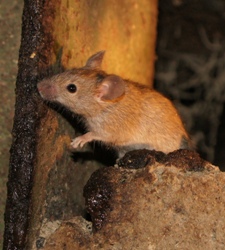The technical programme supporting PestTech 2012 promised much on paper but did it deliver? The Pest editorial team couldnt get to every talk but the ones we did attend certainly drew a good crowd despite the two steep flights of stairs that had to be climbed to get to the aptly named Crows Nest seminar room!
|
Urban gulls not a new phenomena Bizarrely, surveys by the British Trust for Ornithology (BTO) have shown that the gulls now commonly found in urban situations are in decline and they have been added to the Red List of species under threat. All the BTO surveys have been conducted at the coast but gulls which are very intelligent birds have relocated to follow a more comfortable urban lifestyle with plenty of food on hand and predator free rooftops on which to nest. If the intelligence of gulls is in any doubt then one of the observations made recently of a gull picking up a chip form a town centre and taking it to a pond where it dropped the chip in and caught the fish which ate the chip should put those doubts to rest. Gulls have also adapted to their urban environment with 30% now staying put and no longer migrating a behaviour which gives them the chance to claim the bets nesting sites come February. Simon reviewed all the various tools that are available to manage gulls. He emphasised the importance of conducting an assessment of the site before undertaking any management activities and he explained how having conducted many gull management programmes he has concluded that disturbance is the key. “Last year I visited one roof with a gull problem every day. I made my phone calls and stayed up there for around 30 minutes on each visit and did nothing else and guess what the gulls moved away!” Of course pest managers cannot realistically visit every rooftop with a gull problem but the lesson is that an integrated approach is needed and that reliance on any one disturbance method alone is not enough. Later in the day rodent control took centre stage – the ‘rats tails’ resistance project and the new RRAG house mouse guidelines were both well received but what particularly caught our eye was the paper by Professor Jane Hurst from the University of Liverpool on some exciting new research into the scent signals of mice and rats. Sending signals by scent Professor Hurst’s presentation was fascinating. It included some in-depth science which, whilst perhaps not followed in detail by everyone in the audience, provided the necessary reassurance about the conclusions so far from this work. Rodents and most other mammals, unlike people, have what in layman’s terms can only be described as a second nose. This works in a very different way to the broad spectrum system that humans rely on. It requires the animals to get very close to the source of the smell but it provides a much more sensitive and specific means of identifying different odours – predators, competitors, sexual partners and so on. Whilst most pest professionals will have heard of the use of female sex pheromones to attract male insects, the situation with rodents is much more complex. Indeed as Professor Hurst pointed out until this recent work she was sceptical that anything practical could be developed to help control rodent pests. |
|
|
|
What has happened to change her mind is that work with wild mice has identified specific urinary proteins which are extremely important. These scent cues are specially designed to be resistant to degradation and it turns out that female mice can detect one single protein which the lab has christened darcin (after Darcy in Jane Austin’sPride and Prejudice ). It also turns out that the darcin pheromone stimulates associative learning so a female mouse will learn a preference for a location where they encountered darcin, even if there is no darcin present. This is behaviour which could be exploited for pest control purposes, attracting rodents into bait boxes for example. There are also possibilities in creating repellents using predator odours. For example recent work has shown the specific components in cat salvia that induce avoidance behaviour in laboratory rodents. However whether this works in wild mice has not yet been determined. The project with Rothamsted Research will run for five years and we suspect that there will be more to report as the research progresses. |
||







